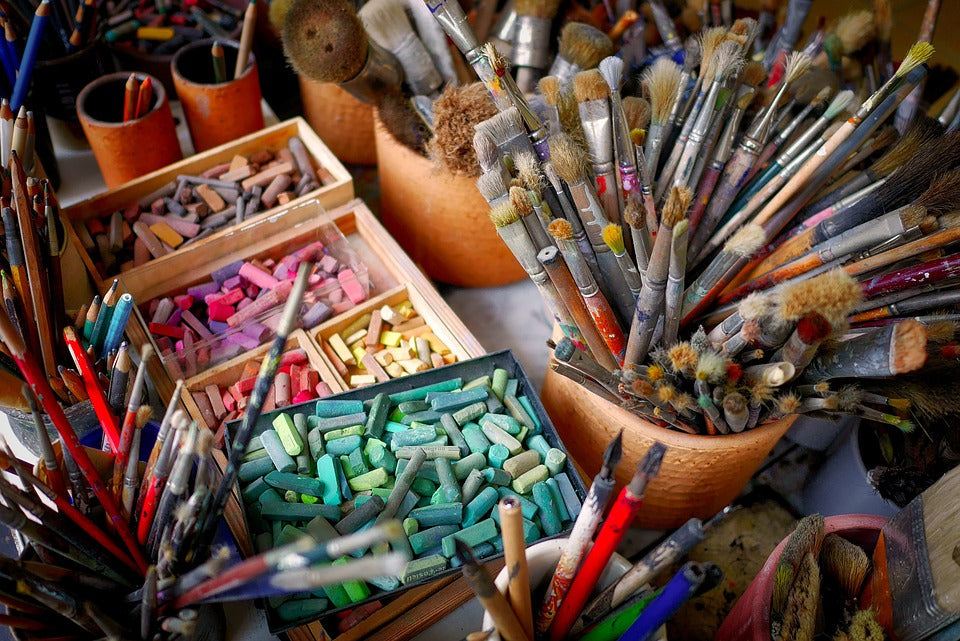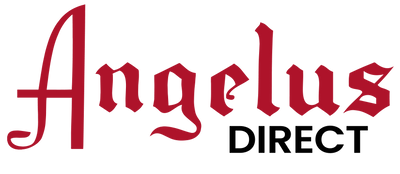Geometric leather designs are rapidly becoming a standout trend in modern home decor. These minimalist yet bold patterns offer a clean and sophisticated aesthetic that complements both contemporary and traditional styles. By painting custom patterns on leather coasters, you can introduce a personalized touch to everyday items while showcasing your creative flair.
Leather coasters, in particular, are the perfect canvas for experimenting with geometric patterns. Their durable surface, coupled with the timeless appeal of leather, makes them both functional and visually striking. Whether you want to create a statement piece for your living space or a thoughtful handmade gift, painting clean geometric lines on leather coasters can transform them into eye-catching decor.

Materials Needed
Leather Coasters
The first step is selecting quality leather coasters. Pre-cut leather options are ideal for beginners as they save time and ensure uniform shapes. For those feeling more adventurous, DIY cutting offers flexibility to create customized coaster shapes. Look for vegetable-tanned leather, as it absorbs paint well and ages beautifully over time.
Leather Paints

Acrylic-based leather paints are the most durable and flexible option for painting lines on leather designs. These paints adhere well to the surface, prevent cracking, and are available in a variety of colors, including bold hues, metallics, and modern neutrals. High-quality paints ensure smooth coverage and vibrant results.
Essential Tools
-
Brushes: Fine-tipped brushes for precision and smooth lines.
-
Painter's Tape: Essential for creating sharp, clean edges.
-
Stencils: Useful for replicating intricate geometric designs.
-
Ruler and Compass: For accurate measurements and pattern layout.
-
Scratch Awl: Helpful for light scoring as a guide for your design.
Preparation Materials
-
Leather Cleaner: Removes dirt and oils for better adhesion.
-
Leather Conditioner: Prepares and softens the surface.
-
Sealant: Protects the painted design from wear and fading.
Preparing the Leather Coasters

Proper preparation of the leather surface is critical to ensure the paint adheres smoothly and lasts long.
Cleaning the Leather
Before you begin, clean the leather surface thoroughly to remove any dirt, dust, or oils. Use a leather cleaner and a soft cloth to wipe the coasters. This step ensures that the paint sticks well without peeling or cracking later.
Conditioning the Leather
After cleaning, apply a thin layer of leather conditioner. Conditioning softens the leather and helps it better absorb the paint, especially if it is stiff or dry. Allow the conditioner to absorb fully before proceeding.
Light Sanding (Optional)
For leather that has a glossy or sealed finish, lightly sand the surface with fine-grit sandpaper. This creates a slightly rough texture, allowing the paint to grip better. Wipe off any dust with a damp cloth after sanding.
Designing Your Geometric Pattern

Creating a geometric pattern requires precision and balance. Start by sketching your ideas on paper before transferring them onto the leather surface.
Sketching Ideas
Use rulers, stencils, and a compass to sketch clean, symmetrical lines and shapes. For beginners, simple shapes like triangles, hexagons, chevrons, and grids are excellent starting points.
Popular Geometric Patterns
-
Triangles: Equilateral triangles create a uniform and modern look.
-
Hexagons: A honeycomb pattern adds visual interest and complexity.
-
Chevrons: Zigzag designs provide dynamic movement.
-
Grids: Straight-line grids achieve a structured, minimalist effect.
Balancing Symmetry
Ensure the patterns are balanced and symmetrical for maximum visual appeal. Lightly score the design onto the leather using a scratch awl or pencil to guide your painting.
Using Painter's Tape for Clean Lines
Painter's tape is your best friend for achieving crisp geometric lines. Follow these steps for professional-looking results:
Applying Painter's Tape
-
Measure and mark the design on the leather surface.
-
Carefully apply painter’s tape along the lines of the design, pressing firmly to avoid paint seeping underneath.
-
For multi-color designs, plan out your sections and layer the tape accordingly.
Tips for Sharp Lines
-
Use a high-quality painter’s tape designed for delicate surfaces.
-
Press the edges of the tape down with a burnishing tool to seal them tightly.
-
Avoid overloading the brush with paint, as excess paint can bleed under the tape.
Layering for Multi-Color Designs
If your design requires multiple colors, allow the first layer to dry completely before applying new tape for the next section. This prevents smudging and keeps the lines sharp.
Painting the Geometric Lines

Once your design is outlined, it’s time to start painting.
Choosing a Color Palette
Geometric leather designs often look stunning with both bold contrasts and subtle neutrals:
-
Modern Neutrals: Blacks, whites, and greys create a sophisticated look.
-
Bold Contrasts: Metallic golds, deep blues, and rich reds add a vibrant touch.
Applying Thin Coats
-
Use fine-tipped brushes for precision when painting lines.
-
Apply thin, even coats of paint to prevent buildup or brush marks.
-
Avoid applying too much paint in one pass. Instead, layer thin coats for smooth, opaque coverage.
Drying Between Layers
Allow each layer of paint to dry completely before applying the next. Use a fan or hairdryer on a low setting to speed up the drying process.
Finishing the Leather Coasters
Once the paint has fully dried, follow these steps to finish your leather coasters:
Removing Painter’s Tape
Slowly peel off the painter’s tape at a 45-degree angle. Be gentle to avoid lifting the paint or damaging the leather surface.
Sealing the Design
To protect your painted design, apply a thin layer of leather sealant. A high-quality sealant prevents the paint from cracking, fading, or peeling over time.
Buffing for a Polished Finish
Once the sealant has dried, gently buff the leather with a soft cloth for a smooth, polished finish.
Tips for Success
-
Practice First: Test your design and painting techniques on scrap leather.
-
Adjust Paint Consistency: If the paint is too thick, thin it slightly with water for smoother application.
-
Steady Your Hand: Use your non-dominant hand to stabilize the leather while painting for better precision.
Maintaining Your Painted Leather Coasters
Proper care ensures your painted leather coasters stay beautiful for years:
Cleaning Without Damage
-
Wipe gently with a damp cloth.
-
Avoid harsh chemicals or excessive water.
Conditioning the Leather
Occasionally condition the leather to maintain its softness and durability.
Storage Tips
Store the coasters in a dry, cool place to prevent fading, and stack them with a soft cloth in between to avoid scratches.
Painting geometric lines on leather coasters is a creative and rewarding process. By following these steps, you can transform plain leather into stylish, personalized pieces of art. Whether experimenting with bold patterns or minimalist designs, geometric leather art allows you to add a touch of sophistication to your home decor. For vibrant paints and high-quality tools, Angelus Direct offers excellent options to make leather customization simple and enjoyable.
FAQs
What type of paint works best for leather coasters?
Acrylic-based leather paints are the best choice as they adhere well, remain flexible, and prevent cracking. High-quality paints ensure smooth application and vibrant results.
How do I prevent paint from cracking on leather?
Prepare the leather surface properly by cleaning and conditioning it. Use thin layers of paint and seal the final design with a high-quality leather sealant for added protection.
Can I paint freehand without using painter’s tape?
Yes, but it requires a steady hand and practice. Painter’s tape ensures clean, sharp lines, especially for beginners.
Do I need to seal painted leather coasters?
Yes, sealing is essential to protect the design from wear, fading, and moisture. Leather-specific sealants offer the best protection.
Where can I find quality leather paints and tools?
Premium leather paints, brushes, and accessories can be found from trusted sources like Angelus Direct, known for providing professional-grade products for leather customization.

